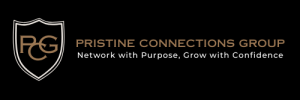A key component of an SEO plan that can greatly increase the amount of visitors to your website is effective internal linking. At Pristine Connections, we place a strong emphasis on the effectiveness of click wise design and internal vs. external linking in order to improve the functionality of your website. This post will examine sophisticated internal linking techniques that raise user engagement and SEO, both of which eventually result in more visitors to the website.
Optimize Your Site Structure
Establish a Hierarchical Layout
Creating a clear, logical site structure is vital. It helps search engines understand your website’s content and how various pages are related, which improves indexing. Implement a hierarchy that funnels authority from your homepage to category pages and then down to individual posts or products, enhancing the SEO potential across your site.
Use Strategic Anchor Text
Using the right anchor text is critical in internal linking. Anchor texts should be relevant, keyword-rich but not overly optimized, and vary naturally across your site. This practice helps boost relevance for target keywords, aiding in better ranking and visibility in search engine results.
Leverage Content Silos
Building content silos involves organizing related content through internal linking, which enhances topical relevance and strengthens keyword associations. This method keeps users engaged by offering them relevant additional content, increasing time on site, and reducing bounce rates.
Enhance User Navigation
Implement Click Wise Design
Incorporating click wise design into your internal linking strategy means placing links where users intuitively expect them. This design principle makes navigation effortless and improves the overall user experience, which is crucial for retaining visitors and converting them into customers.
Optimize Link Placement
The placement of internal links on your page should follow a logical and value-adding layout. Links placed in high-engagement areas like the top of an article or in a sidebar can drive more clicks and deeper engagement, compared to those hidden at the bottom of the page.
Create Navigation Links
Using well-thought-out navigational links such as breadcrumbs, related posts, or a robust menu can significantly enhance how users move through your site. These links should facilitate easy access to related content and major sections of your site, aiding in a smoother user journey.
Utilize Advanced Linking Techniques
Smart Linking with AI Tools
Use AI tools to analyze user behavior and predict patterns, helping to place internal links dynamically based on the content preferences of visitors. These smart linking strategies can personalize the user experience, leading to longer sessions and more page views.
Regularly Update Old Content
One of the most effective internal linking strategies is the periodic updating of old content. Add new links to existing articles, particularly to newer content, which can redistribute internal link equity and refresh old pages that might have lost some traffic over time.
Monitor and Analyze Link Performance
Regularly monitor the performance of your internal links using analytics tools. Analyzing metrics such as click-through rates and bounce rates can provide insights into what’s working and what isn’t, allowing for data-driven adjustments to your linking strategy.
Final Wordings
At Pristine Connections, we understand the significance of advanced internal linking strategies, including the balance between “internal linking vs external linking” and the application of “click wise design”. By implementing these internal linking hacks, you can not only improve your SEO and user engagement but also see a substantial increase in traffic to your website. Internal linking is not just about SEO; it’s about creating a better, more engaging user experience. Start refining your internal linking strategy today, and watch your website’s traffic soar.
FAQ’s
Internal linking refers to the process of linking one page of a website to another page within the same website. It helps in improving SEO by allowing search engines to crawl and index more pages efficiently. Well-structured internal links can also enhance user experience, keep visitors on your site longer, and increase overall site traffic.
Effective internal linking provides your visitors with more relevant content and easier navigation, which can lead to a more satisfying browsing experience. Well-placed links can guide users naturally through your site, reducing bounce rates and increasing the time spent on each page.
Yes, internal linking plays a significant role in SEO. It helps distribute page authority and ranking power throughout your site, which can enhance the visibility of lower-profile pages. Strategic use of anchor text in internal links can also help those pages rank better for specific keywords.
Some best practices include using descriptive and relevant anchor text, linking to and from high-value pages to spread authority, and ensuring that all links are relevant to the content. Additionally, keeping a balanced and natural flow of links without overcrowding any single page is crucial.
It’s advisable to review and update your internal linking structure regularly, especially after major content updates or structural changes to your website. This ensures all links remain relevant and functional, helping maintain a strong network within your site.







